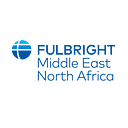How Fulbright Inspires Diversity and Collaboration
In 1946, James William Fulbright introduced legislation that brought forward the Fulbright Program with the purpose of building empathy and understanding between the people of the United States and the world. Today, 76 years after the induction of the Fulbright Program, I am returning to Jordan after making a home out of Silicon Valley in California and being immersed in a diverse collaborative culture that is leading the innovations of our modern world.
The Fulbright Program was a step along my lifelong journey in search of answers to one of my most burning questions: how can we create a reality full of potential and opportunity for the developing nations of our MENA region? As I was growing up, I was troubled to see the harsh reality of limited career opportunities for Jordan’s youth. Therefore, I sought further education and international exposure in order to take part in creating a promising and prosperous future for our region.
For better or for worse, I am an optimistic dreamer. Having been born in the age of digital innovation, readily adopting the use of technology and its applications in my daily life, I imagined endless opportunities and economic growth in the MENA region driven by digital services. By the 2010s, this dream was slowly turning into reality; a tech startup scene was formulating in Jordan, local companies were establishing their regional and global presence, big tech companies were opening offices in Jordan, and a wave of acquisitions was following.
Having made a career in tech thanks to the uplift in Jordan’s economy, I believed that in order to keep this momentum going, we needed more bold, well-rounded entrepreneurs who are tech-savvy leaders capable of driving innovation. Taking on this challenge, I turned my eyes towards the world’s cradle of tech innovation: Silicon Valley. I wanted to learn the secrets of tech success and the economic model that drives it. The Fulbright Program was the perfect opportunity for me to expand my business and technology acumen and immerse myself in the United States’ culture of innovation.
And so it happened that in 2021 I joined Carnegie Mellon University’s Master of Software Management (MSSM) program in Silicon Valley as a Fulbright Scholar. I found myself in a classroom that invoked discussions between students who were the brightest minds in tech from across the globe, industry specialists, and professors who were veterans of tech and business. Beyond the classroom, my cohort and I had the opportunity to work with the latest digital technologies. Tools like web3, crypto, and Metaverse applications were always ready for me at university. It was equally valuable to engage with the ecosystem of innovation surrounding us by attending events such as Techcrunch, AWE, UC Berkeley’s Skydeck, and many more.
Surrounded by many billion-dollar success stories in Silicon Valley, I kept trying to understand what was so unique about this place that has made it the fertile land of successful businesses. Was it the abundance of capital? The culture of thinking big and challenging the status quo? The top schools that produce startups and highly qualified talent? Or the amazing yearlong weather? While all these factors are probably fundamental to the success of the Silicon Valley model, I believe that there is one more important factor: the people.
Like any metropolitan area, Silicon Valley is home to an incredibly diverse group of people. People from all continents, cultures, religions, and backgrounds have come to call this place their home. While these people speak different languages, celebrate different traditions, and eat different foods, they all live and breathe innovation, look to build the next big thing, and work to change the world. Regardless of where you come from, there is a way for you to come to Silicon Valley and contribute to the technology that is shaping our future.
In Silicon Valley I did not only experience Thanksgiving and the 4th of July, but also Diwali, the Mid-Autumn Festival, Hanukkah, and Ramadan. This diversity was a constant reminder that innovation is a product of the collective efforts of the human race. In the distant past, knowledge passed between civilizations only after the previous civilization had ended, but today we are blessed to have the tools, technology, and the will that all enable us to collaborate and innovate together. In essence, that is what the United States is all about; it is the new world, the land of opportunity that saw waves of migrations throughout the centuries. All of these factors come together and shape the United States into the leading nation it is today.
Saad is a 2021 Fulbright student from Jordan. He recently received an MS in Software Management from Carnegie Mellon University.
Follow updates from Saad and other Fulbright students on our Facebook and Twitter pages. Check back here every month for more updates on the blog and Medium Series to see what Saad does this year!
